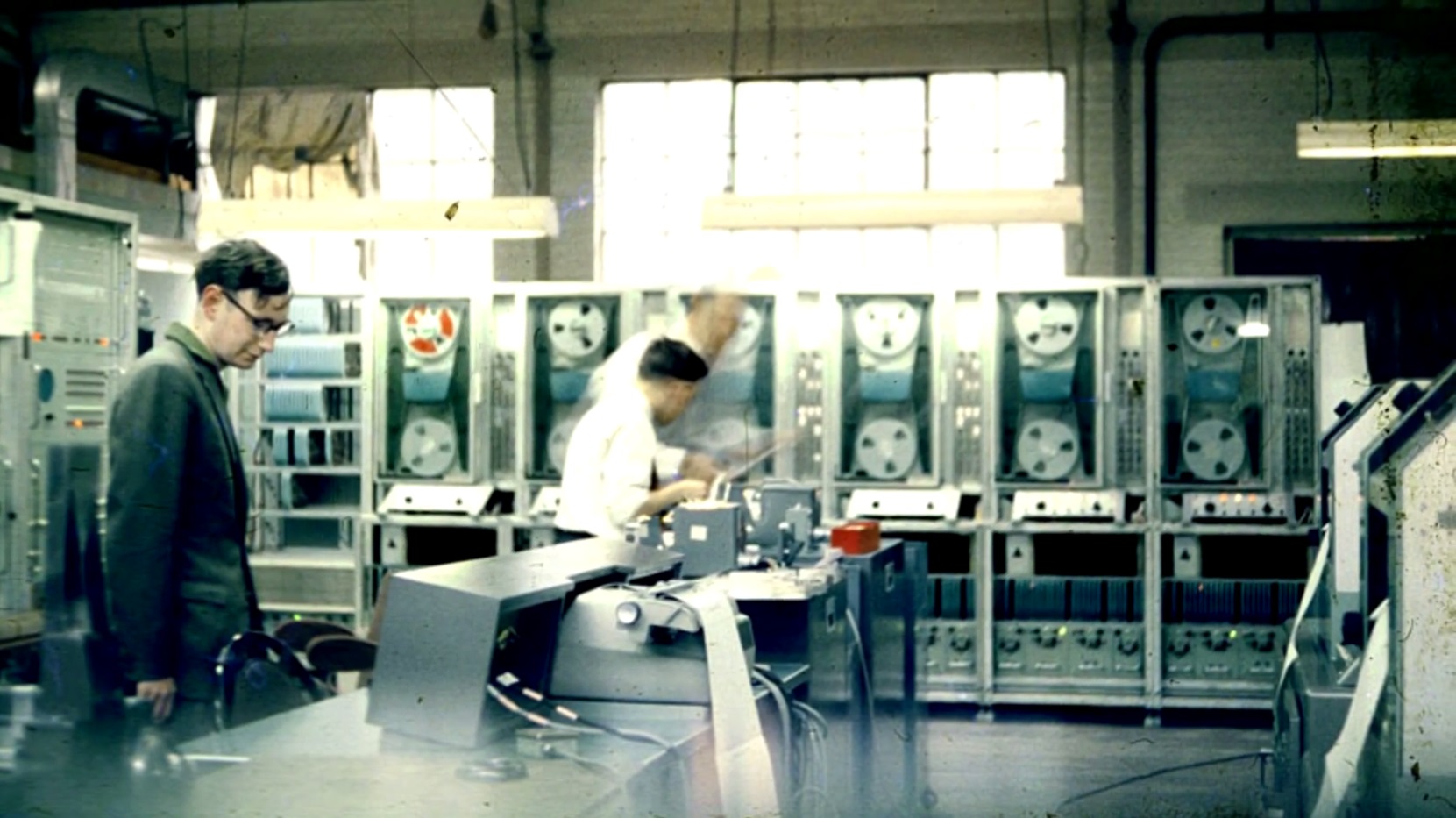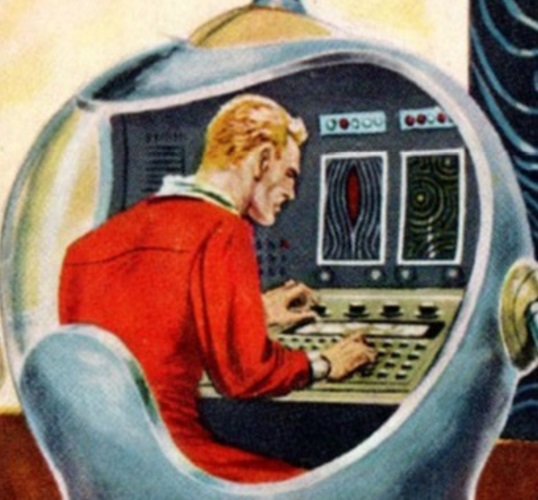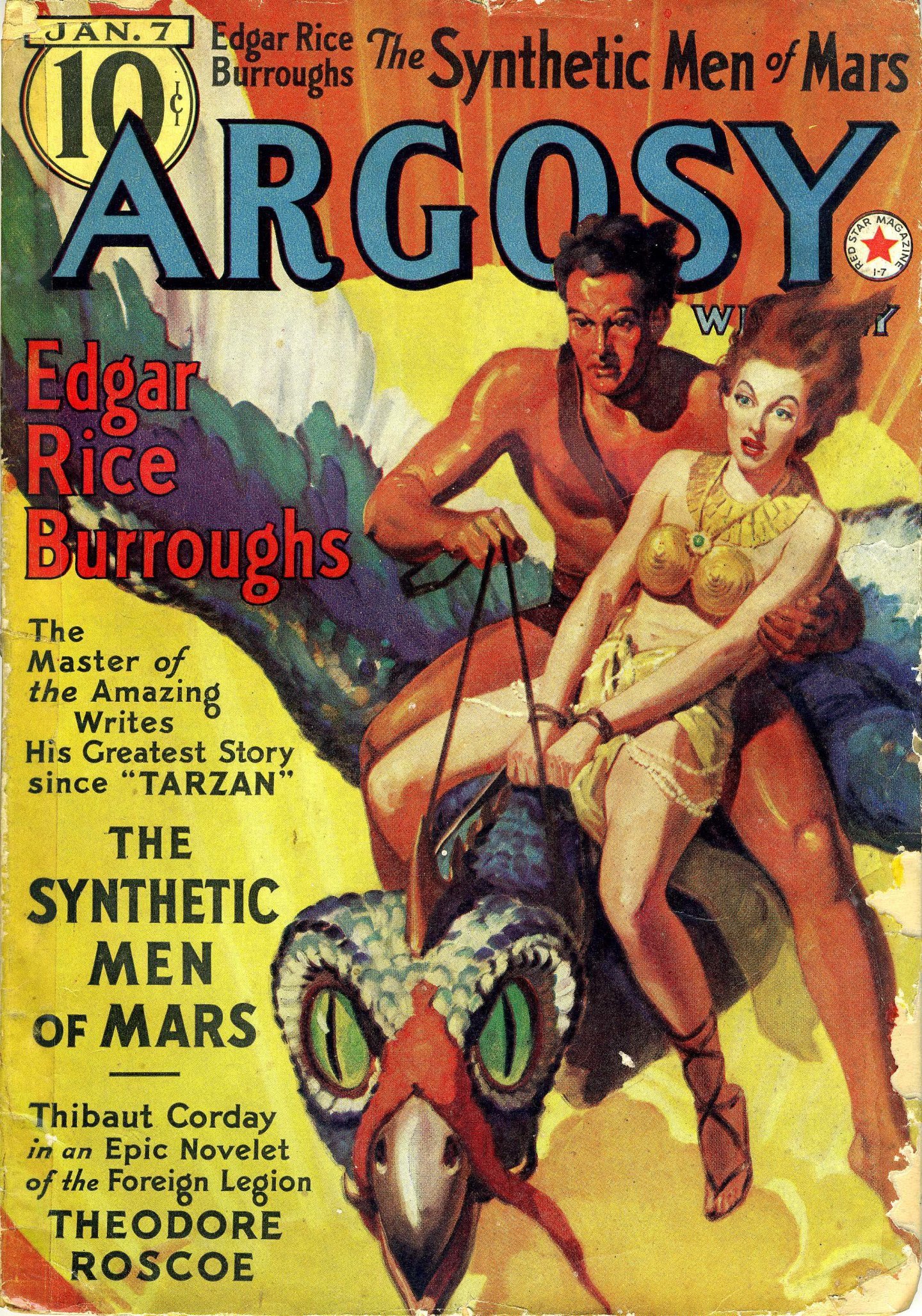
by Gideon Marcus
TV Triplets
Back when the Young Traveler and I were watching The Twilight Zone, we accidentally picked the wrong time to turn on the set and ended up getting introduced to Mr. Ed, Supercar, and The Andy Griffith Show, in that order. It made for an amusing night, and we learned a lot about the prime-time schedule for that season.
Recently, we once again fell down the rabbit hole, though not quite by accident.
It all started with an amazing new import form England. You may have seen the American rebroadcast of Danger Man back in the summer of '61. It was a smart spy show starring NATO agent, John Drake, played by Patrick McGoohan. Well, he's back, and this time his episodes are a full hour rather than just half. It's gripping stuff, albeit a bit heavier and more cynical than the first run. Realistic, idealistic, and respectful of women, it's a delightful contrast to the buffoonish Bond franchise.

So gripping was the show that we ended up somehow unable to change the channel when Password came on. This game show is sort of a verbal version of Charades where a contestant tries to get their partner to say a word using single-word clues. Play goes back and forth until one team gets it right.
It's kind of a dumb show for the viewer because we already know the answer. On the other hand, the contestants always include celebrities, and it's fun to watch them struggle through the rounds.

Gene Kelly looked like he wanted to kill his partner. The whole time!

Juliet Prowse, on the other hand, was adorable and funny.
After half an hour of that, we had summoned enough energy to reach toward the television remote…until we heard the bugle strains heralding the arrival of Rocky and Bullwinkle (and friends). It had been my understanding that the show had completed its five year run, but it has apparently gone into reruns without missing a beat. Since we had missed the first couple of years, well, we couldn't turn off the television now!

The only thing that saved us was the subsequent airing of Bonanza, a show I am only too happy to turn off. Who knows how long we'd have cruised The Vast Wasteland otherwise. Of course, now we're stuck watching all three shows every week (homework permitting).
Print Analog
Science fiction magazines are kind of like blocks of TV shows. They happen regularly, their quality is somewhat reliable, but their content varies with each new issue. This month's Worlds of IF Science Fiction defined the phrase "much of a muchness". Each (for the most part) was acceptable, even enjoyable, but either they were flawed jewels, or they simply never went beyond workmanlike. Read on, and you'll see what I mean:

This rather goofy cover courtesy of McKenna, illustrating Small One
The Replicators, by A. E. van Vogt
Steve Maitlin is an ornery SOB, a Marine veteran of Korea who knows the world is all SNAFU, especially the moronic generals who run the show. Not only does this attitude make life miserable for those around him, but it also brings the Earth to the brink of interstellar war. It turns out that the alien BEM Maitlin shoots one day on the road to work is just one of an infinite number of bodies for an IT, and the replacement body ends up with Maitlin's cussedness as part of its basic personality.
Said IT also has the ability to replicate any weapon the humans throw against it, but magnified. Shoot at it? It builds a big-size rifle. Bomb it? It comes back with an extra-jumbo jet and a bigger nuke. In the end, Maitlin is the only one who can stop the thing, which makes karmic sense. But can the vet change his nature in time to meet minds with the alien?

by Gray Morrow
This story doesn't make a lot of sense, but Van Vogt is good at keeping you engaged with pulpish momentum. Three stars.
Reporter at Large, by Ron Goulart
In a future where mob bosses have replaced politicians (or perhaps the politicians have just more nakedly advertised their criminal nature!) power is entrenched and hereditary. Only an honest journalist can bring about a revolution, but when any person has his price, only an android editor's got the scruples to speak truth to power.
Ron Goulart writes good, funny stories. Unfortunately, while I see that he tried, he failed at accomplishing either this time out. Two stars, and the worst piece of the mag.
Small One, by E. Clayton McCarty
A young alien has exiled himself as part of its first stage of five on the journey toward maturity. Its isolation is disturbed when a tiny bipedal creature lands in a spaceship nearby and finds itself trapped in a cave. The child-being establishes telepathic contact with the intruder (obviously a human) and an eventual rapport is established. But everything falls apart when the Terran's rapacious teammates land and fall into conflict with the alien's infinitely more powerful family…

by Jack Gaughan
I am a sucker for first contact stories, especially when told from the alien viewpoint. This one is good, but it suffers from a certain lack of subtlety, a kind of hamfisted presentation of the kind I normally see from new writers. That makes sense; this is his (her?) first story.
Three stars, and my favorite piece of the magazine.
Blind Alley, by Basil Wells
A year after settling the planet of Croft, the human colonists and their livestock all become afflicted with blindness. Against the odds, they survive, shaping their lives around the change. But can their society take the shock when a new arrival, generations later, brings back the promise of sight?
Blind Alley treads much of the same ground as Daniel Galouye's excellent Dark Universe from a few years back. The question is worth asking: when is a "disability" simply a different way to be able? That said, Wells is not as skilled as Galouye, and the story merits three stars as a result.
Gree's Commandos, by C. C. MacApp

by Nodel
On a thick-atmosphered planet, Colonel Steve Duke assists a race of Stone Age flying elephants against the interstellar aggressors, the Gree, and their mercentary cohorts. It's a straight adventure piece with virtually no development, either of the characters or the larger setting. Somewhat similar to Keith Laumer's latest novel (The Hounds of Hell, also appearing in IF), it doesn't do anything to make you care. Sufficiently developed, it could have been good.
Two stars.
Zombie, by J. L. Frye
Here is the second story by a brand new author…and it shows. In the future, it becomes possible to transplant a personality in the short term to a physically perfect body. Said transfers are used almost exclusively for espionage and sabotage — it's not much fun living in a shell of a form that can't really feel or enjoy anything other than the satisfaction of a job well done. Indeed, the only people willing to endure the hell of personality transfer (back and forth) are the profoundly crippled.
This story of a particularly hairy mission has its moments of poignance, but again, Frye is not quite up to the challenge of a difficult topic. Plus, he needs more adjectives in his quiver; I count seven times he used "beautiful" to describe the sole female character. Even Homer varied between calling Athena "grey-eyed" and "owl-eyed".
Three stars.
Starchild (Part 2 of 3), by Frederik Pohl and Jack Williamson
Last up is the second installment of three (that number again!) in this serialized sequel to The Reefs of Space. It's a short one, barely long enough to cover the harsh interrogation of Bowsie Gann. Gann was the loyal spy servant of The Plan, returned to Earth at the same time the star-reef-dwelling Starchild began to turn off the local suns to scare Earth's machine-run government.

by Nodel
It's a most unpleasant set of pages, with lots of torture and cruelty (something Fred Pohl does effectively; viz. A Plague of Pythons). That said, Pohl and Williamson can write, and I am looking forward to seeing how it all wraps up.
Three stars.
Stay Tuned
Like much of the Idiot Box's offerings, IF continues to deliver stuff that's just good enough to keep my subscription current. I'd like editor Fred Pohl to tip the magazine in one direction or another so I can either stop buying it or enjoy it more…
Until then, I guess my knob stays tuned to this channel!

[If you have a membership to this year's Worldcon (in New Zealand) or did last year (Dublin), we would very much appreciate your nomination for Best Fanzine! We work for egoboo…]

![[January 26, 1965] Down the Rabbit Hole…Again (February 1965 <i>IF</i>)](https://galacticjourney.org/wp-content/uploads/2020/01/650126cover-672x372.jpg)

![[January 18, 1965] Doors also open (February 1965 <i>Fantasy and Science Fiction</i>)](https://galacticjourney.org/wp-content/uploads/2020/01/650118cover-672x372.jpg)




![[January 6, 1965] Plus C'est La Même Chose (February 1965 <i>Galaxy</i>)](https://galacticjourney.org/wp-content/uploads/2020/01/650106cover-518x372.jpg)







![[January 2, 1965] Say that again in English? (Talking to a Machine, Part Two)](https://galacticjourney.org/wp-content/uploads/2020/01/650102comp-672x372.jpg)









![[December 31, 1964] Lost in the Desert (January 1965 <i>Analog</i>)](https://galacticjourney.org/wp-content/uploads/2019/12/641231cover-672x372.jpg)








![[December 15, 1964] Failed Flight of Fancy (January 1965 <i>Fantasy and Science Fiction</i>)](https://galacticjourney.org/wp-content/uploads/2019/12/641215cover-672x372.jpg)



![[December 5, 1964] Steady as she goes (January 1965 <i>IF</i>)](https://galacticjourney.org/wp-content/uploads/2019/12/651205cover-672x372.jpg)







![[December 1, 1964] Planet Four or Bust! (What we know about Mars)](https://galacticjourney.org/wp-content/uploads/2019/12/641201mars-672x372.jpg)






![[November 29, 1964] All-star (December 1964 <i>Analog</i>)](https://galacticjourney.org/wp-content/uploads/2019/11/641129cover-672x372.jpg)











![[November 22, 1964] A Special Gift](https://galacticjourney.org/wp-content/uploads/2019/11/sadallovercover-612x372.jpg)
